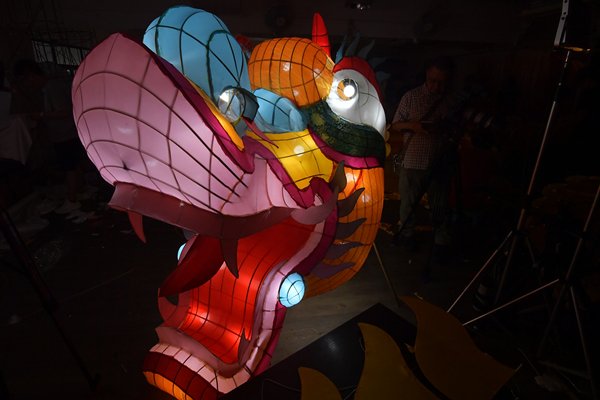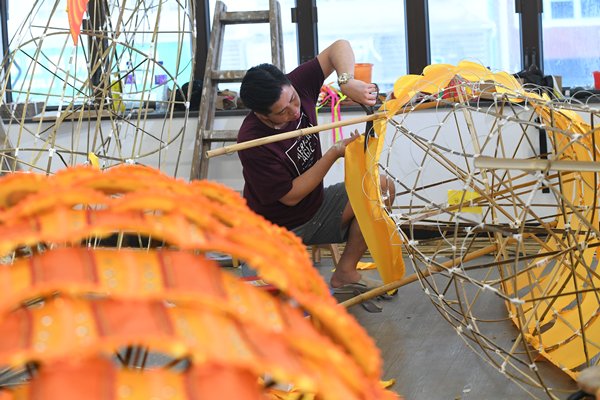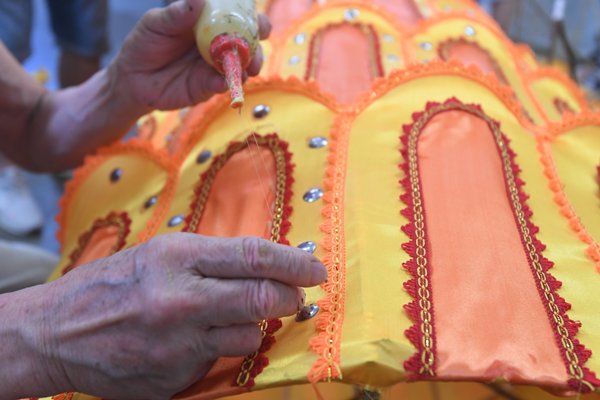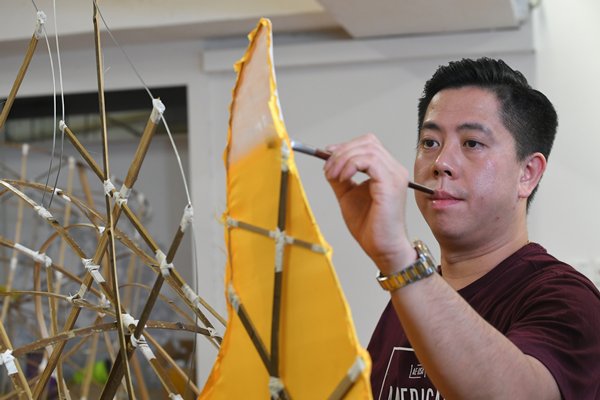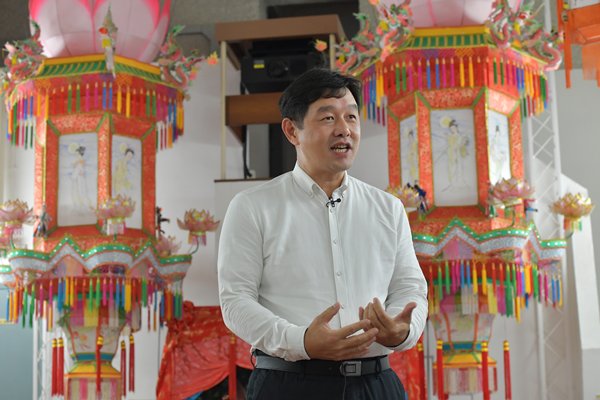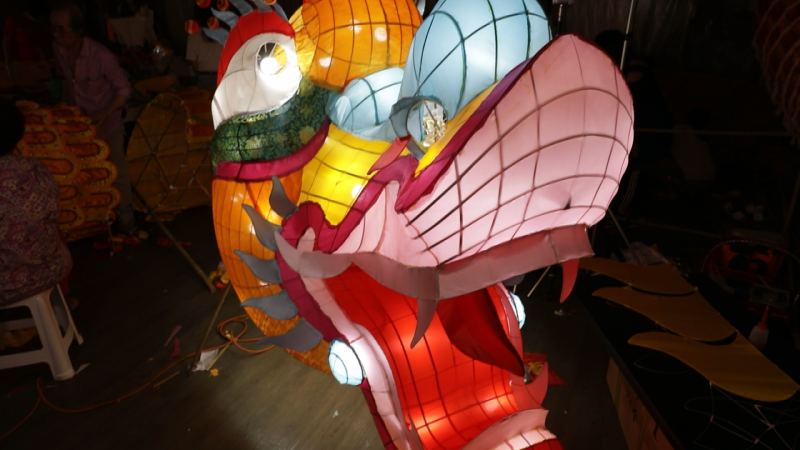Keeping traditions alive
To make an authentic traditional lantern, simple materials such as bamboo strips, iron wires, tissue paper, colourful fabrics and adhesive paste are used.
When creating the frame of the chosen design, bamboo strips are connected and fastened with tissue paper.
Next, the tissue paper and fabrics are placed over the skeletal frame.
The following steps call for drawing meticulous patterns or inscriptions.
Last but not least, different parts of the lantern are carefully pieced together and decorated.
In order to promote and preserve the paper crafting technique, the Intangible Cultural Heritage Office has taken advantage of the Mid-Autumn Festival to invite paper craft master Hui Ka-hung to fashion a massive dragon lantern.
Amazing technique
Mr Hui’s model is a traditional southern dragon. Its head, body and tail will occupy an area of 40 sq m. Such technical requirements are much larger than ordinary lanterns. The head of this mythical creature possesses a unique feature.
“We call it an auspicious gold dragon. It may look ferocious, but it is actually a gentle giant. It does not bite and you can see it smiling,” said Mr Hui.
It takes up to 70 bamboo skeletons to painstakingly construct the body of the dragon and mold its perfectly coiled posture.
Mr Hui said paper craft masters do not rely on blueprints, but their own personal experience and unique style.
“The design is etched in my mind throughout the entire creative process. All along, I must pay close attention to ensure the dragon is made to scale.”
Fabricating the scales on this legendary creature is another extremely complex task. Mr Hui methodically attaches rabbit hair and colorful straps onto the scales, one by one.
“A total of 80,000 zinc mirrors have been used. Once it is finished, it will shimmer beautifully in the sunlight.”
He said the design implies harmony and good luck. He encouraged visitors to literally walk into the giant lantern and inspect every aspect of the dragon’s head and body, and take pictures at the same time.
Industry survival
Paper crafting has always played an important role in the city’s cultural celebrations and religious rituals. In addition to lanterns, other paper-crafted products commonly seen in the city include paper floral tributes, effigies of the Ghost King, as well as paper offerings.
However, due to urbanisation, lifestyle changes and the retirement of paper craft masters in Hong Kong, there is a major challenge to the survival of this delicate and time-consuming art form.
This is why in 2017, the paper crafting technique was put on the Representative List of the Intangible Cultural Heritage of Hong Kong. That means paper crafting is of high cultural value and in urgent need of preservation.
Intangible asset
The Intangible Cultural Heritage Office has taken important measures to safeguard the paper crafting technique by recording the entire lantern-making process. It also strategically uses cultural celebrations like the Mid-Autumn Festival to keep the skill alive by enhancing public awareness.
Intangible Cultural Heritage Office Curator Brian Lam said: “Paper craft is not just a craft, it supports the livelihood of the whole nation. Therefore, it is important to preserve Hong Kong's traditional culture.”
Mr Lam added that paper crafting is a creative industry itself.
“With just one piece of tissue paper and one bamboo strip, creations can be made. This falls in line with society's emphasis on creativity.”
The majestic dragon lantern will be on display at Victoria Park from September 11 to 15.
